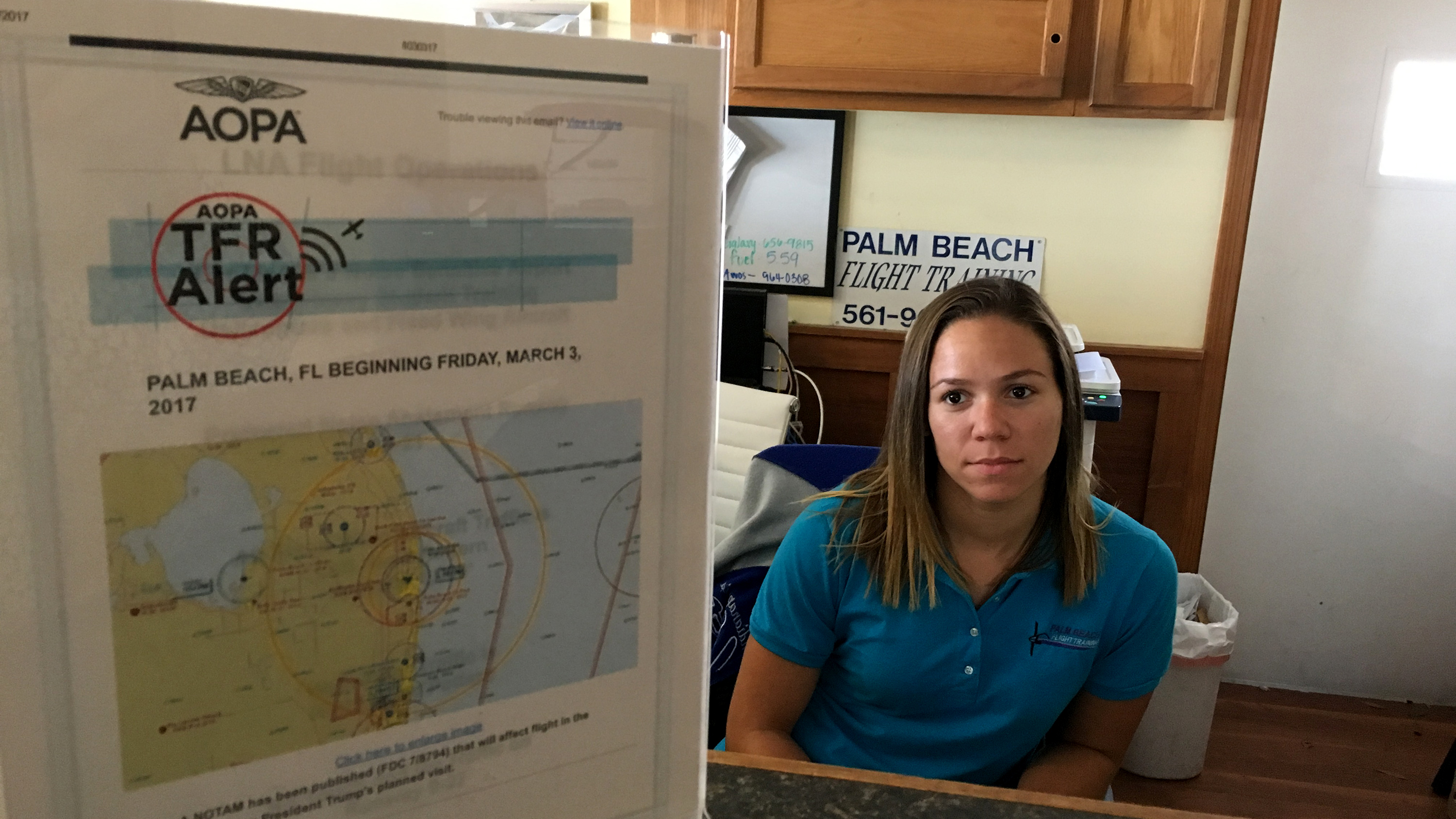Agencies brief AOPA on Mar-a-Lago TFR rules
The FAA and the U.S. Secret Service have briefed AOPA and other stakeholders on security and flight procedures that will be in effect over Palm Beach, Florida, during temporary flight restrictions (TFRs) for President Donald Trump’s seasonal visits to his Mar-a-Lago resort.
As was the case last winter during Trump’s seven trips to the area, Palm Beach County Park Airport, the general aviation airport inside the TFR’s 10-nautical-mile inner ring centered on Palm Beach International Airport, will shut down for most operations when TFRs are active. The vertical extent of the inner and outer rings of airspace will be 17,999 feet msl.
The Secret Service informed AOPA that for an airport to be considered a TSA gateway airport, it must have an Airport Security Program that satisfies TSA airport security regulations (49 CFR 1542) and a control tower, said Nobuyo Sakata, AOPA director of airport security.

Lantana Airport is a nontowered airport, where in a bid to enhance security, the administration is working to complete the installation of a perimeter fence.
In the outer airspace ring, flights are limited to arrivals and departures from local airports by aircraft on an active flight plan, in two-way radio communication with air traffic control, and squawking an assigned discrete code. ATC could permit transits on a workload-permitting basis.
Increased access encouraging
In a positive development for GA, a procedural modification based in part on cooperation demonstrated during recent TFRs for Trump’s stays at his country club in Bedminster, New Jersey, will permit some banner-towing and agricultural flights in the Palm Beach airspace’s 10-to-30-nm outer ring, subject to strict rules and prior approval, said Sakata, who attended the FAA’s Oct. 18 briefing.
Throughout spring and summer of this year, AOPA worked with New Jersey’s congressional delegation on GA's concerns about the New Jersey TFRs. In July, six members of Congress from the region jointly sent a letter to the Secret Service, requesting that steps be taken to reduce the economic hardships experienced by local businesses when the flight restrictions were in effect.
AOPA has also urged pilots and airport operators to adopt the AOPA Airport Watch program as a component of their security procedures.
“AOPA continues to address the matter of airspace access with the FAA, the Transportation Security Administration, and the U.S. Secret Service, and believes successful implementation of these procedures will create opportunities for additional exemptions,” Sakata said.
According to the FAA briefing on Mar-a-Lago TFRs, banner-towing, crop-dusting, and pipeline patrol flights originating in the outer ring may be approved on a case-by-case basis. Operators of aircraft with operational transponders may request approval by submitting a completed local TFR flight request form.
Banner-tow operators must submit a map of the planned flight path and the flight pattern for picking up and dropping off the banner each day they plan to fly; they also must notify the Secret Service before flying. Only those maneuvers included in the approved flight request will be permitted in the outer core airspace, with “straight, level, predictable” flight out of the zone required en route to the approved towing route.
Sakata credited AOPA’s relationship with security agencies, and pilot cooperation, for the improvements in GA’s ability to operate during the TFRs.
“According to the Secret Service, the operators in the Bedminster TFR airspace followed the procedures ‘to a T’ and demonstrated perfect performance. Therefore, the same types of operations will be able to proceed during the Mar-a-Largo TFRs,” she said.




